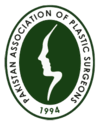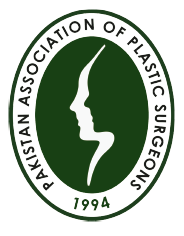Cleft Lip and Palate
Surgery for cleft lip and palate involves a series of procedures aimed at correcting the congenital condition where there is an opening or gap in the upper lip and/or roof of the mouth (palate). These procedures are typically performed by a multidisciplinary team, including plastic surgeons, oral and maxillofacial surgeons, otolaryngologists, and other specialists. The treatment plan is tailored to the individual needs of the patient. Here are the main surgical procedures and techniques used for cleft lip and palate:
Cleft Lip Repair:
Cleft Lip Surgery (Cheiloplasty):
Technique: The surgeon makes incisions on both sides of the cleft, creating flaps of tissue that are then sutured together to close the gap. The goal is to create a more normal appearance of the upper lip.
Timing: Cleft lip repair is often performed when the baby is a few months old, typically between 3 to 6 months of age.
Nasoalveolar Molding (NAM):
Technique: NAM involves the use of an orthodontic device to reshape the gums, lips, and nostrils before cleft lip surgery. This may be used in some cases to improve surgical outcomes.
Timing: NAM is usually started soon after birth and continues for several weeks before surgery.
Cleft Palate Repair:
Cleft Palate Surgery (Palatoplasty):
Technique: The surgeon closes the opening in the roof of the mouth using tissue flaps from the surrounding areas. The goal is to restore proper function, including speech and feeding.
Timing: Cleft palate repair is often performed between 9 to 18 months of age, before speech development.
Pharyngoplasty:
Technique: In some cases, additional procedures such as pharyngoplasty may be performed to improve the function of the soft palate and prevent speech issues.
Timing: Pharyngoplasty may be performed in conjunction with cleft palate repair or in a separate surgery.
Secondary and Revision Surgeries:
Orthognathic Surgery:
Technique: In cases where there are significant jaw discrepancies, orthognathic surgery may be considered to correct the alignment of the upper and lower jaws.
Timing: This type of surgery is typically performed during adolescence or adulthood.
Speech Surgery:
Technique: Speech surgery may be considered if speech problems persist after initial cleft palate repair. Procedures like pharyngeal flap surgery or speech therapy may be employed.
Timing: This can be performed during childhood or adolescence.
Rhinoplasty:
Technique: Rhinoplasty may be performed to address any nasal deformities associated with the cleft lip repair.
Timing: Rhinoplasty is often deferred until adolescence when the facial structures have matured.
Multidisciplinary Care:
Dental and Orthodontic Care:
Dental and orthodontic interventions are often part of the overall treatment plan to address dental and jaw alignment issues.
Speech Therapy:
Ongoing speech therapy may be recommended to address any speech-related concerns.
Psychosocial Support:
Emotional and psychological support is an integral part of the care for individuals with cleft lip and palate and their families.
Postoperative Care:
Follow-Up Appointments:
Regular follow-up appointments with the surgical team are essential to monitor healing and address any concerns.
Scar Management:
Scar management techniques may be recommended to minimize scarring.
It’s important to note that the specific procedures and timing can vary based on the individual’s needs and the severity of the cleft condition. The treatment plan is developed collaboratively by the surgical team and other specialists involved in the care of the patient. The goal is to achieve optimal aesthetic and functional outcomes while addressing the unique needs of each patient.

